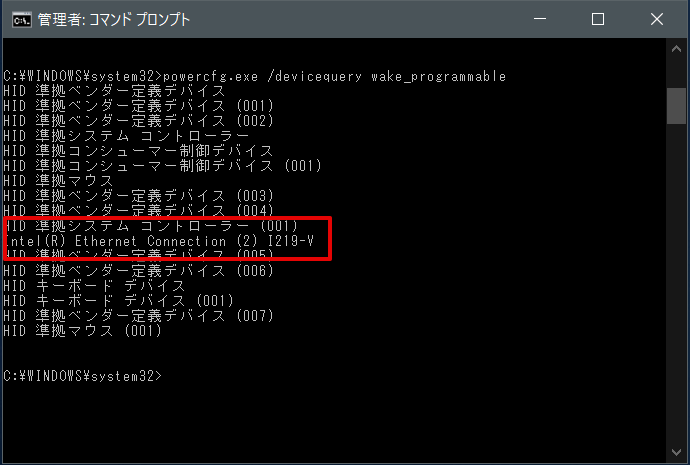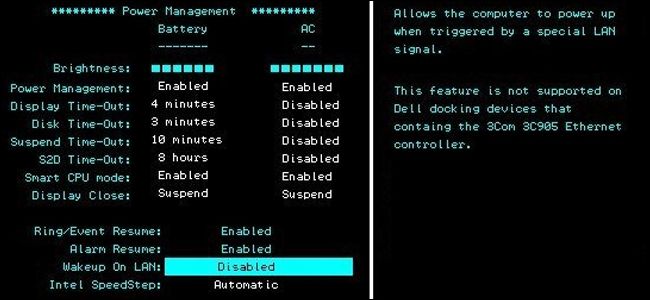- Yes, you can wake up a computer/laptop via Wake-on-LAN using your tablet or smartphone. To do so, you must configure TeamViewer Wake-on-LAN via your router (DynDNS) or TeamViewer IDs as described above. This allows you to wake up your laptop, computer, workstation, or other devices that are running Windows or Mac OS X.
- Solarwinds Free Wake-on-Lan Tool. Solarwinds Free Tool assists with the typical WOL Functions.
Solarwinds Wake-On-Lan. SolarWinds brings you a straight forward, easy to use Wake-On-LAN.
-->This article explains why unwanted wake-up events occur when you enable the Wake On LAN (WOL) functionality in Windows 7 and in Windows Vista, and describes how to configure the computer to wake only in response to a Magic Packet.
Original product version: Windows 7 Service Pack 1
Original KB number: 941145
Wol Wake On Lan Wan
Introduction
In Windows 7 and in Windows Vista, the WOL feature can wake a remote computer from a power-saving state such as sleep. When you enable WOL, the network adapter continues listening to the network when the computer is asleep. WOL wakes the computer if it receives a special data packet.
One kind of special data packet contains a wake-up pattern. By default, Windows 7 and Windows Vista listen for the following packets when you enable WOL:


- A directed packet to the MAC address of the network adapter
- A NetBIOS name resolution broadcast for the local computer name
- An Address Resolution Protocol (ARP) packet for the IPv4 address of the network adapter
- An IPv6 Neighbor Discovery packet for the network adapter's solicited-node multicast addressA Magic Packet can also wake a remote computer.

A Magic Packet is a standard wake-up frame that targets a specific network interface. Vm for mac os.
Wol Wake On Lan Wan
In most cases, a wake-up pattern or a Magic Packet enables remote access to a computer that is in a power-saving state. However, some networking protocols use these packets for other purposes. For example, routers use ARP packets to periodically confirm the presence of a computer. Such protocols do not use these packets to wake computers. However, in some networks, network traffic may wake up a remote computer by mistake. These unwanted wake-up events may occur in especially noisy environments such as enterprise networks. Therefore, by default, WOL is disabled in Windows 7 and in Windows Vista.
More information
WOL can be an effective way to conserve power while keeping a computer reachable on the network.
However, unwanted wake events may occur after you enable WOL. For example, the computer may wake up soon after it enters a power-saving state. One cause may be that the network environment generates wake-up patterns too frequently. In this situation, we strongly recommend that you configure the computer to wake only in response to Magic Packets. Magic Packets are especially designed to wake up a computer from a power-saving state. Also, because a Magic Packet is specific to the MAC address of a network adapter, a Magic Packet is unlikely to be sent accidentally.
To configure Windows 7 in this manner, follow these steps:
- Click Start, type Network and Sharing Center in the Start Search box, and then press Enter.
- On the Tasks bar, click Change adapter settings.
- Right-click the network adapter that you want to configure, and then click Properties. For example, right-click Local Area Connection, and then click Properties.
- If you are prompted for an administrator password or for confirmation, type the password or provide confirmation.
- Click Configure.
- If the network adapter supports WOL, click to select the Allow this device to wake the computer check box on the Power Management tab, select the Only allow a magic packet to wake the computer check box, and then click OK.
To configure Windows Vista in this manner, follow these steps:

- Click Start, type Network and Sharing Center in the Start Search box, and then press Enter.
- On the Tasks bar, click Manage network connections.
- Right-click the network adapter that you want to configure, and then click Properties. For example, right-click Local Area Connection, and then click Properties.
- If you are prompted for an administrator password or for confirmation, type the password or provide confirmation.
- Click Configure.
- If the network adapter supports WOL, select the Allow this device to wake the computer check box on the Power Management tab, select the Only allow management stations to wake the computer check box, and then click OK.
Proxy Wol (wake On Lan)
You may also have to enable BIOS settings to enable WOL. The specific BIOS settings depend on the manufacturer of the computer.
